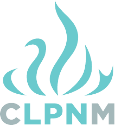About the LPN Profession
If you are viewing this webpage, you have likely been asked to provide information to help the licensed practical nursing (LPN) profession transition to The Regulated Health Professions Act (RHPA).
You may work with, employ, or manage one or more LPNs, in which case you may be familiar with the profession already. Still, you may have questions about LPN scope of practice, education, professional standards and practice environments. We aim to answer your questions below.
We hope you will find this information useful when responding to one of the CLPNM’s consultations related to the profession’s transition to the RHPA. If you have additional questions not answered here, please get in touch with us at practice@clpnm.ca
The Profession
LPNs have practised in Manitoba since the 1940s. Today, there are just under 4,000 LPNs across our province.
Members of the LPN profession practise both independently and collaboratively with other members of the health care team. In all practice contexts, LPNs are responsible and accountable for their own practice and decisions. All LPNs in Manitoba are required to carry their own liability insurance, in addition to any liability insurance coverage they may have through an employer.
LPNs practise in a wide range of environments including hospitals (e.g. medicine, surgery, emergency, pediatrics, rehabilitation, labour/delivery/postpartum), long-term care facilities, community settings (e.g. home care, community health clinics, medical clinics, nursing foot care), industry (e.g. occupational health), correctional facilities, and group homes.
Many practical nursing education programs are — and have for some time been — delivered in communities outside of Winnipeg. Because of this, the LPN profession plays an important role in maintaining health care service provision in many rural, remote, and Northern communities.
Education
LPNs are educated from the same body of nursing knowledge as other nurses. At entry-to-practice, Manitoba LPNs have completed a two-year college-level diploma program where they have studied physical, biological, and nursing sciences. The focus of the program is on assessment, application, analysis, planning, and evaluation. Practicum experiences are threaded throughout the program, always building on previous knowledge, and expanding to include a broader variety of patient populations and nursing practice areas.
LPNs develop their competence, over the course of their careers, through practice experience, additional education and training.
Scope of Practice
Manitoba LPNs have a broad scope of practice compared to LPNs elsewhere in Canada. In many other Canadian jurisdictions, practical nursing education programs are shorter and the focus of LPN practice is on the care of clients who are stable and who have predictable needs. Manitoba LPNs are educated to care for clients across the lifespan, who may or may not be stable, and whose care needs may vary in complexity.
An individual LPN’s suitability for practice in any nursing environment will always depend on that LPN’s unique nursing competencies, which in turn will be determined by the LPN’s education, training, and experience following their entry-level education.
Professional Regulation
LPNs in Manitoba are licensed and regulated by the College of Licensed Practical Nurses of Manitoba (CLPNM).
Although the CLPNM is a distinct regulatory body from the College of Registered Nurses of Manitoba and the College of Registered Psychiatric Nurses of Manitoba, Manitoba’s three nursing regulators work in close collaboration and often develop shared guidance for members of all three nursing professions.
Contact Us
Input from LPNs and stakeholders will be important throughout the RHPA transition process.
Please contact us with questions or to share information at:
204-663-1212
1-877-663-1212 toll free
practice@clpnm.ca
For More Information
More information about the RHPA is available on the Government of Manitoba’s website here.
A list of the “reserved acts” regulated under the RHPA is available here.
For more information on LPN practice, see:
Standards of Practice and Conduct
Code of Ethics
Practice Directions and Guidelines
Competency Documents
Determining Appropriate Practice: A Guide to Decision-Making


